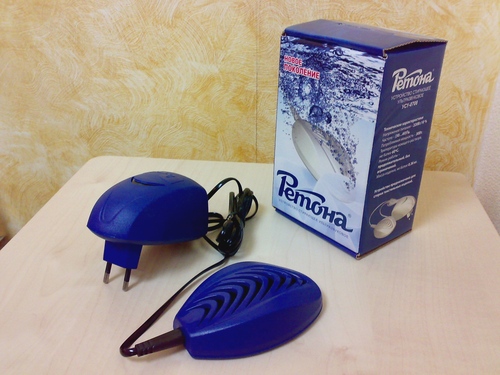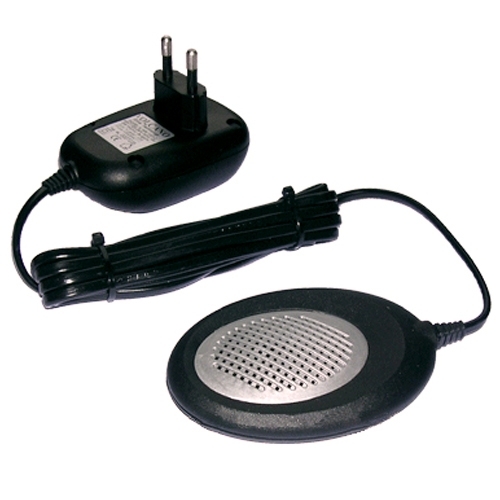
Advertising ultrasonic washing machines appeared in the media about 20 years ago. It would seem that here it is - a miracle of technology! No effort, a minimum of electricity, almost a teaspoon of detergent - and the hostess’s dream of snow-white linen will come true. “Hummingbird” came to replace “Retone”, then “Bionics” appeared on the market, and each time the manufacturers claimed that this was the latest development of the most secret laboratory of the most closed scientific research institute. Surprisingly, some still believe this ...
A bit of history
Statements that washing machines, whose action is based on ultrasound, have been invented in recent years - nothing more than a publicity stunt. The idea of using ultrasonic vibrations to wash clothes came to mind of a German scientist back in 1949: it was then that in the bathtub, in which the ultrasonic waves were immersed, they washed several sheets, specially soiled with soot. The result was encouraging: compared to the traditional method of washing, it took 70% less water and a third less time. Why is the use of ultrasound has not found wide application in modern washing machines? The answer is simple: to achieve an effective effect, the power of the device should be at least 20 watts per liter of water, while for a 10-liter tank, the generator would be a separate unit weighing 25-30 kg. It is clear that the convenience of such devices for washing, to put it mildly, is doubtful. In addition, electrical appliances with similar parameters would hardly be certified for safety, and they would be twice as expensive as a modern multi-functional washing machine. That is why development engineers abandoned the idea of using ultrasound, and only a few years later presented the world with a new development that became the prototype of a modern automatic machine.
A bit of theory
For the excitation of ultrasonic vibrations in a liquid, special generators are used, the action of which is based on the reverse piezoelectric effect. The essence of this phenomenon is as follows: under the action of alternating current, quartz single crystals and ceramic materials undergo microstrains, leading to the appearance of ultrasonic vibrations. The spherical shape of the emitters allows focusing waves at one point. When using high-power generators, a so-called cavitation effect arises in the liquid - the formation of bubbles, due to which the “breaking out” of dirt particles from the fabric fibers occurs.
It is worth considering that if in pure water there is enough power of 20 W / liter for the occurrence of a cavitation effect, then in the presence of soaked laundry, this figure increases several times. The shorter the wavelength, the more the ultrasonic waves are absorbed; The first layer of fabric can become an insurmountable obstacle. It has been experimentally established that in order to achieve the desired effect for washing 1 kg of linen in 4 liters of water an acoustic power of about 150 W is required. Naturally, in such volumes underwear no one washes. In the commercials of ultrasound devices, a capacity of at least 10 liters (or even a standard bath filled to the brim) is usually demonstrated. Taking into account the efficiency, usually not exceeding 70%, the power of the radiator for such a volume should be 450-500 W. And now pay attention to the technical characteristics of the so-called u / s washing machines: power consumption - 10 - 15 watts. A simple calculation shows that the acoustic power of such a device is 7–10 W, and the effective (taking into account at least 1–2 layers of fabric) is no more than 5 W. At best, with the help of such a device you can wash only a handkerchief in a glass of water.

Photo: www.medzal.ru
Good product does not need advertising!
If suddenly you are still thinking about buying a "miracle of technology", do not be lazy to look for feedback from those who have already fallen for this bait. You shouldn’t waste time reading enthusiastic comments on the official websites of manufacturers and dealers - you will not find the right information there. But on professional forums for physicists, topics about UZ-washing machines the size of a palm (or even a matchbox) are akin to KVN: reading the comments of competent specialists you are unlikely to stop laughing. Just think how the low-watt toy will “compress and stretch thousands of capillaries” (from the description “Retones”), thus forming “millions of bubbles”? Pseudoscientific descriptions, replete with incomprehensible technical terms, refute even the law of conservation of energy! In addition, do not forget that the washing process is not limited to the removal of contaminants: after this stage, there is still a rinsing and spinning. In these operations, an ultrasonic miracle will not help you: you will have to train the muscles of the arms and back.
It would not be superfluous to study the instructions for using the “product of secret development”. Pay attention to the temperature, recommendations for mixing and the amount of detergent applied. Nothing like? In everyday life, these "optimal conditions" are simply called soaking!
And finally: a group of enthusiastic experts disassembled several toys, proudly referred to as “ultrasonic washing machines” and inquired about the cost of the parts from which they were assembled. The result was very interesting: the most expensive component turned out to be a piezogenerator, which stands at a retail sale of no more than 100 rubles. And now look at the price at which you are offered to buy this miracle.
Miracles happen?
A few years ago, the start of the production of ultrasonic washing machines designed for 6 kg of laundry was announced by the Japanese company Sanyo Electric. However, a detailed study of the process makes it obvious that it is based on completely different physical and chemical phenomena. During washing, a direct electric current is passed directly through the water with the soaked laundry. It is known from the school chemistry course that during the hydrolysis of water oxygen, hydrogen, ozone and hydrogen peroxide are formed. The resulting cocktail is an excellent alternative to laundry detergent. In addition, tap water contains dissolved chlorine, which also undergoes hydrolysis. The resulting hypochlorous acid has a powerful bleaching and disinfecting effects, providing high quality washing.
Perhaps in the near future, such washing machines will appear in our market, but for now - it remains only to wish not to lose prudence when dealing with obsessive sellers and not to pay attention to aggressive advertising that is not true.



